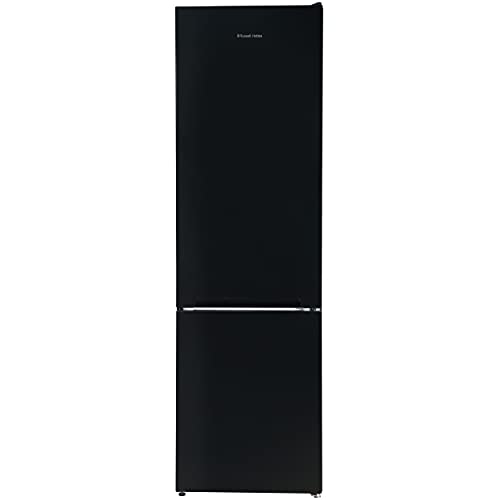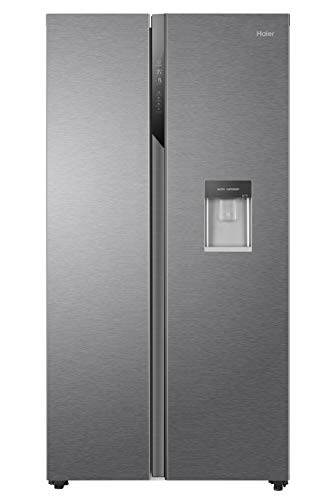Fridges And Freezers Tips From The Top In The Business
페이지 정보
작성자 Mitzi Neale 댓글 0건 조회 9회 작성일 25-07-03 00:05본문

Understanding Fridges and Freezers: The Essential Kitchen Appliances
Refrigerators and freezers are two of the most vital home appliances in modern kitchens. These home appliances serve a crucial function in food preservation and waste decrease by making sure that disposable items stay fresh and safe for usage. This post looks into the numerous types of fridges and freezers, their functionalities, and important factors to consider for selection and upkeep.
Types of Refrigerators
The market provides a range of refrigerator types, each developed to meet various customer needs. Below is a list of the most common kinds of fridges:
Top-Freezer Refrigerators
- Most typical type.
- Freezer compartment lies above the refrigerator area.
- Generally more budget-friendly and energy-efficient.
Bottom-Freezer Refrigerators
- Freezer lies at the bottom.
- Allows simpler access to fresh products at eye level.
- Typically includes pull-out drawers for better organization.
Side-by-Side Refrigerators
- Refrigerator and freezer sections are nearby.
- Ideal for narrow kitchens and allows easy access to both compartments.
- Typically includes water and ice dispensers.
French Door Refrigerators
- Integrates a bottom freezer with double doors at the top.
- Deals ample storage and stylish designs.
- Typically includes features like temperature-controlled drawers.
Compact Refrigerators
- Smaller sized size ideal for minimal areas.
- Typically utilized in dormitory rooms, studio apartments, or as secondary fridges.
Table 1: Comparison of Refrigerator Types
| Type | Benefits | Downsides | Normal Size |
|---|---|---|---|
| Top-Freezer | Affordable, energy-efficient | Less convenient access to the freezer | 14-30 cu. ft. |
| Bottom-Freezer | Easier access to fresh food | Freezer can be more difficult to arrange | 19-30 cu. ft. |
| Side-by-Side | Easy access, water/ice dispenser | Narrow vs. storage space | 22-30 cu. ft. |
| French Door | Elegant, large, organized | More expensive | 20-30+ cu. ft. |
| Compact | Space-saving, portable | Minimal storage | 1.7-5.5 cu. ft. |
Types of Freezers
Freezers are a similarly important device for food conservation. They are available in numerous styles designed to fit different home needs. Think about the following types:
Upright Freezers
- Run like a standard refrigerator with vertical storage.
- Much easier to organize with racks and compartments.
Chest Freezers
- Big, horizontal style typically using more storage space.
- Maintains temperature levels better during power failures.
- More energy-efficient than upright models.
Portable Freezers
- Compact units ideal for outside activities or small spaces.
- Typically utilized for camping trips or as short-term storage.
Table 2: Comparison of Freezer Types
| Type | Advantages | Drawbacks | Typical Size |
|---|---|---|---|
| Upright Freezer | Much easier to organize | Less energy-efficient, more floor area | 5-20 cu. ft. |
| Chest Freezer | Holds more items, energy-efficient | Harder Where to buy fridge freezer arrange | 5-25 cu. ft. |
| Portable Freezer | Compact and flexible | Minimal storage capability | 1-10 cu. ft. |
Key Features to Consider
When selecting a fridge or freezer, customers ought to remember a number of functions that can enhance performance:
- Energy Efficiency: Look for models with the ENERGY STAR certification to minimize electricity costs.
- Storage Capacity: Evaluate storage needs based upon household size and eating practices.
- Temperature Control: Some home appliances offer digital controls for exact temperature settings.
- Adjustable Shelving: Customizable shelving enables ideal organization.
- Water and Ice Dispenser: Offers convenience but can use up valuable space inside.
- Noise Level: Sound ratings can influence convenience, especially in open-concept homes.
Advantages and disadvantages of Having a Fridge and Freezer
While fridges and freezers are vital innovations, they also have specific benefits and downsides:
| Pros | Cons |
|---|---|
| Protect food life-span and reduce waste | Require routine maintenance |
| Enable bulk purchasing and meal prepping | Can be costly to purchase and run |
| Offer benefit and quick access to food | Occupy considerable kitchen area space |
Upkeep Tips
To guarantee longevity and optimum efficiency of fridges and freezers, consider the following upkeep ideas:
- Regular Cleaning: Clean the interior and exterior regularly to avoid accumulation of dirt and germs.
- Examine Seals: Inspect door seals frequently for leaks to maintain efficiency.
- Temperature level Settings: Keep the fridge at 34-38 ° F and the freezer at 0 ° F for optimal food conservation.
- Defrost as Needed: Chest freezers must be thawed frequently to maintain efficiency.
- Clear Air Vents: Ensure that air flow isn't obstructed to enhance energy effectiveness.
FAQs About Fridges and Freezers
Q1: How long can food be saved in a freezer?A: Most foods can be kept in a freezer for a number of months. Meats and poultry frequently last 4-12 months, while vegetables can last approximately 8-12 months.

Q2: How typically must I clean my fridge and freezer?A: It is suggested to clean your fridge and freezer every 3 to 6 months, or as needed when spills happen. Q3: Can I put hot food straight in the fridge?A: It is advised to cool hot food to space temperature before positioning it in the fridge to avoid
raising the temperature inside the home appliance. Q4: Why is my fridge running constantly?A: This might be due to a malfunctioning thermostat, blocked coils, or door seals that aren't working appropriately. Fridges and freezers are invaluable
properties to modern-day families, supplying vital services for food storage and preservation.
Comprehending the different types, functions, and upkeep requirements can help consumers select the right appliances for their needs and optimize their functionality. Welcoming energy-efficient models not just supports sustainable practices however likewise contributes to substantial cost savings on utility expenses, making informed options more important than ever.
- 이전글서울스웨디시 공주휴게텔 진주오피 계룡오피 경주키스방 오피사이트 파주스웨디시 25.07.03
- 다음글[텔레문의: @HERMESSOL10 ] 솔루션개발 솔루션임대문의 25.07.03
댓글목록
등록된 댓글이 없습니다.

